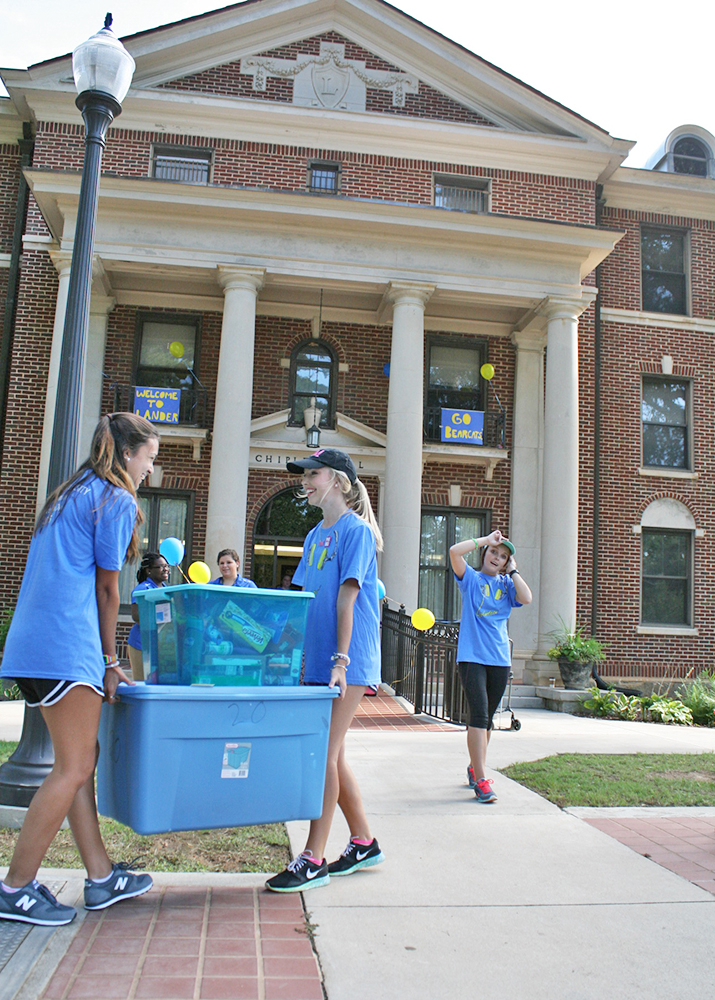 After moving to Greenwood from Williamston in 1904, Lander College (now University) experienced a rapid expansion of enrollment that proved the need for a new dormitory at the then women-only college. Plans were drawn up for a stately, three-story residence hall that would accommodate the additional students, and Marvin S. Chipley, a school trustee and businessman from a prominent Greenwood family, offered up $25,000 in support for its construction. The total cost of the building was $81,900, according to a report provided at the 1925 Methodist Annual Conference.
After moving to Greenwood from Williamston in 1904, Lander College (now University) experienced a rapid expansion of enrollment that proved the need for a new dormitory at the then women-only college. Plans were drawn up for a stately, three-story residence hall that would accommodate the additional students, and Marvin S. Chipley, a school trustee and businessman from a prominent Greenwood family, offered up $25,000 in support for its construction. The total cost of the building was $81,900, according to a report provided at the 1925 Methodist Annual Conference.
The building was designed by architects James Hemphill II, of Greenwood, and Rudolph Lee, of Clemson. Hemphill, with various partners, was the architect for numerous notable buildings in Greenwood around that time.
 The Index-Journal newspaper reported at the time of Chipley Hall’s completion that it was designed in the style of buildings at Oxford and Cambridge. The contractor of the building was C.M. Guest and Son. Construction began in June 1924 and finished in March 1925.
The Index-Journal newspaper reported at the time of Chipley Hall’s completion that it was designed in the style of buildings at Oxford and Cambridge. The contractor of the building was C.M. Guest and Son. Construction began in June 1924 and finished in March 1925.
When Chipley opened, the community welcomed the impressive new building with open arms. A two-page spread in the Index-Journal included advertisements from numerous local companies congratulating Lander.
“Greenwood Welcomes Chipley Hall Because It Makes Lander A Modern College,” one of the advertisements reads.
In the century since its opening, Chipley Hall has been a witness to countless moments and milestones in Lander’s rich history, from the acceptance of male students in 1944, to Lander’s transition to a public institution in 1973, and then to Lander University in 1992. Throughout those years, Chipley has remained a women’s residence hall.
 Chipley Hall has stolidly watched as a century of scholars have ridden horses in front of its steps and held maypole dances on its lawn. She has seen her residents give goodbye kisses to their suitors on her steps, and cry over heartbreak in her rooms. Students have spent long hours in her study rooms and celebrated acing exams together.
Chipley Hall has stolidly watched as a century of scholars have ridden horses in front of its steps and held maypole dances on its lawn. She has seen her residents give goodbye kisses to their suitors on her steps, and cry over heartbreak in her rooms. Students have spent long hours in her study rooms and celebrated acing exams together.
Chipley has watched as Lander has confronted every advancement, conflict, and hardship that has emerged over the last century. She saw students, faculty and staff deal with ration cards during World War II in the 1940s and saw Lander students be called to Operation Desert Storm in 1990. In 1957, Chipley students lined up to receive the polio vaccine on campus. In her 100-year lifetime, Chipley students have gone from writing letters home and waiting in line to use the telephone to carrying a telephone in their pocket wherever they go.
Then there are the memories. Priceless memories and friendships cherished by thousands of women and forged inside Chipley Hall’s hallowed walls.
If only the walls could talk.